Article and photos:Prevail
Myanmar is separated from Vietnam by only a small piece of Laos, but the climate is very different. Myanmar has three distinct seasons. Summer, from March to June. Rainy season, from July to September. And the best season for tourism - autumn, from about October to February.
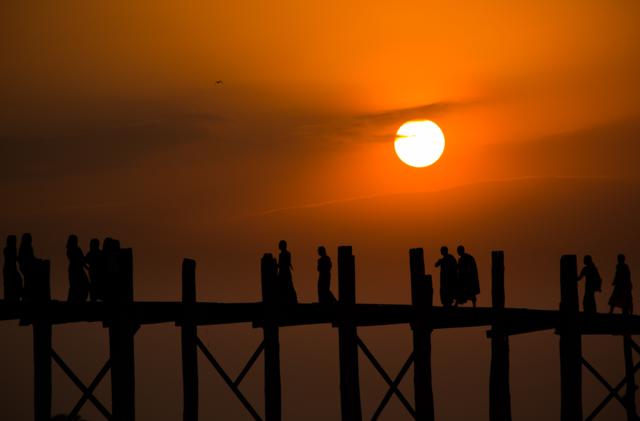
It took me two flights to get to Yangon from Hanoi. My luggage was still my familiar camera set, along with a map of the route including the destinations I chose to explore Myanmar. Those were Yangon, Mandalay, Bagan and Inle Lake - destinations where I could learn, experience, explore the culture, history, people of Myanmar and more importantly, bring back beautiful photos of the amazing country of Myanmar.

I spent the first day in Yangon. I briefly researched some necessary information and experiences for my trip and planned the order of destinations. And I chose Mandalay as the first place to explore and experience.
I arrived in Mandalay at dawn, after a long journey overnight by tourist bus. Mandalay, in my research, is a peaceful city and the most culturally typical of Myanmar, so that is also the reason I chose Mandalay for my first experience. The taxi took me to the hotel on a road that gradually brightened in the morning mist. Along the road were people exercising, in the distance were a few monks begging, and more surprisingly, the ancient citadel of the last feudal dynasty of Myanmar appeared majestic and quiet next to the blue canal surrounding the capital.
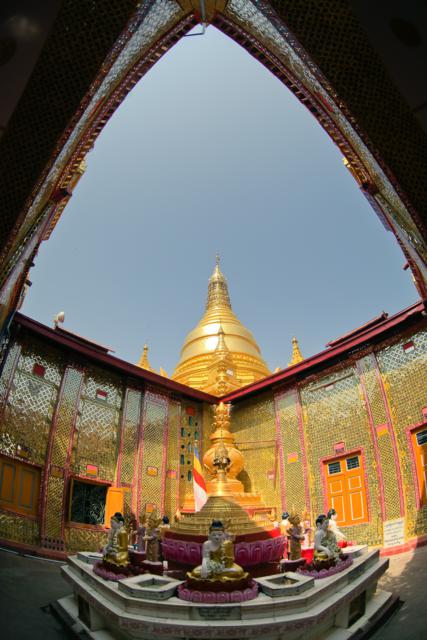
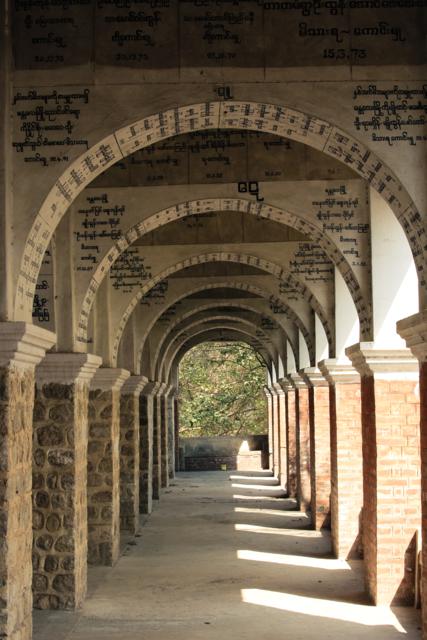
The people of Myanmar are generally very friendly and hospitable. They have many interesting, strange and unique features. Myanmar men wear skirts and chew betel. Myanmar women paint their faces with herbal powder to make their faces stand out. The majority of Myanmar’s population is Buddhist, sometimes I feel like there are more Buddhists than ordinary people here. The Myanmar people in Mandalay are truly the most “Myanmar”. They are gentler than the gentle people I met in Yangon. And I started to experience Mandalay with people like that.

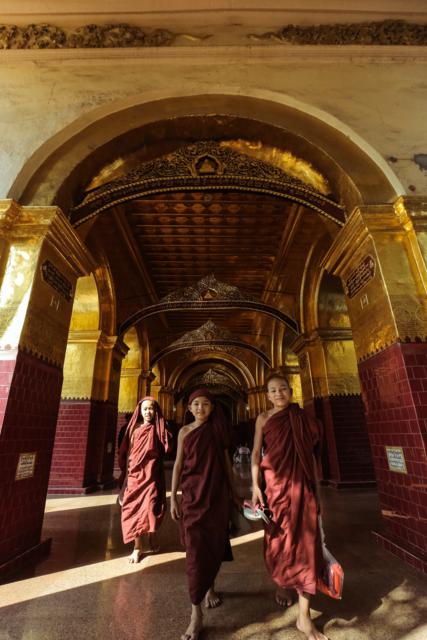
I returned to the ancient city of Mandalay before sunrise. The elaborate citadel wall with its unique architecture was silent in the dawn, reflected in the still water. Mandalay reminded me of Hue. The wooden palace was built in 1857-1859, when King Mindon moved the capital from Amarapura to Mandalay, based on astronomical calculations and good omens right at the foot of Mandalay Hill. This was the residence of the last two kings of this dynasty.

I rented an old car with a friendly driver, and drove along the road surrounding the citadel. It was so vast. It was a pity that the entire wooden palace was destroyed by bombs during World War II. But I thought what remained was already wonderful. The incompleteness brought a sense of vague, mysterious contemplation.

In the distance was Mandalay Hill, with its giant golden pagodas shining on top. I wanted to be there, to see the capital from above. To get to the top of the hill, the driver told me two options: driving around the winding mountain passes, or climbing thousands of steps. I took a risk and chose to climb, which was very high and far. It took more than an hour from the foot to the top. But I have no regrets.
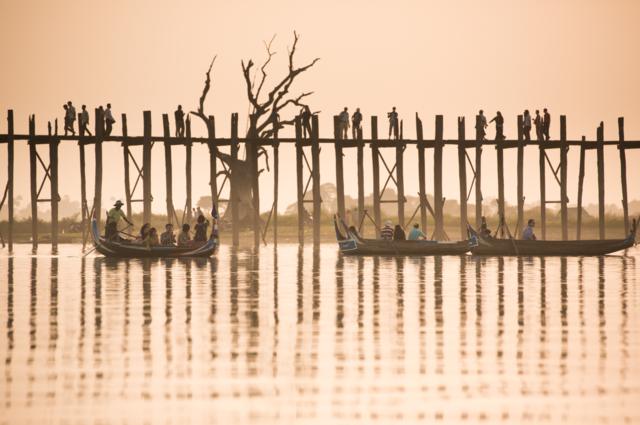
The hiking route took me through majestic pagodas that were connected to each other on the hillside, with many giant Buddha statues. On top of Mandalay Hill is Sutaungpyi Pagoda, unique with a system of mirror tiles on the wall that reflects light, making the pagoda become bright gold and sparkling among the mountain every time the sun shines. Of course, like other sacred places in Myanmar, visitors must dress modestly and go barefoot to the pagodas, regardless of hot or cold weather. From Sutaungpyi, visitors can look out in all directions. I was able to see the ancient city from the top of Mandalay. The great regret for a capital city with so many magnificent palaces that no longer exists.

Leaving Sutaungpyi, I headed to Mahamuni Pagoda, where there is an impressive Buddha statue wearing a robe and a hat with a 6-inch thick layer of gold leaf on its body, applied by Buddhists over many generations. The most special thing is the "Buddha face washing ceremony" which takes place at 4 a.m. in a sacred and solemn atmosphere. Next to the west gate of Mahamuni Pagoda is the traditional stone carving village of Kyauksittan. The space here is covered in a layer of stone dust, which may be a bit polluted for tourists, but I like that atmosphere. Kyauksittan Village was established right when King Mindon built the city of Mandalay. I saw many stone statues and other decorative objects there. The stone statues here range in size from tiny to tens of meters high. It is said that Kyauksittan Village is the place that supplies stone statues for the entire country of Myanmar.

I was on my way to Taungthaman Lake, where the famous U Bein Bridge is located. I had seen many photos from photographers around the world, and I really wanted to see U Bein, watch the sun set behind the bridge.
U Bein (or U Bain) is a symbol of connection, antiquity, simplicity and durability on the outskirts of Mandalay. Thousands of pillars, planks and railings are made of teak without using a single nail. The mayor named U Bein took advantage of the surplus teak from the ancient palace left behind in the former capital of Amarapura and built the bridge around 1850, after Emperor Mindon left the capital. The bridge is now only open to pedestrians and street vendors, serving tourists. The number of tourists who set foot on the bridge today is no less than the number of locals who cross the bridge every day. The city does not keep statistics on how many people visit the bridge each day, but this is a destination that any tourist to Mandalay cannot miss.
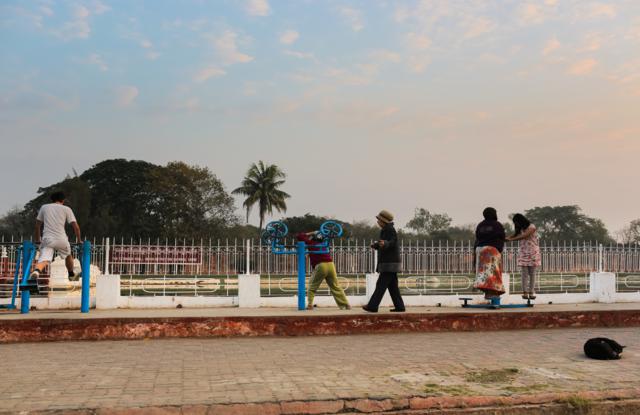
I arrived at Taungthaman in the afternoon. The sunlight dyed the lake's surface a golden yellow. In the distance, golden pagoda roofs could be seen hidden in the afternoon mist. U Bein was truly beautiful and magical. I had seen the pictures and imagined them, but I was still amazed by the beauty of the bridge stretching as far as the eye could see on the horizon.
When visiting U Bein, visitors can walk on the bridge, or they can see the bridge from the lake. In Taungthaman, there is a boat dock with hundreds of boats to serve tourists. The boats here are very beautiful, just sitting on them is a wonderful thing. I rented a boat for 10,000 Kyat (equivalent to 200,000 VND) for about 2 hours on the lake. The boatman was a very nice person. He took me across the bridge, watching it from both sides, then stopped far away on the lake, waiting for the sunset over U Bein.
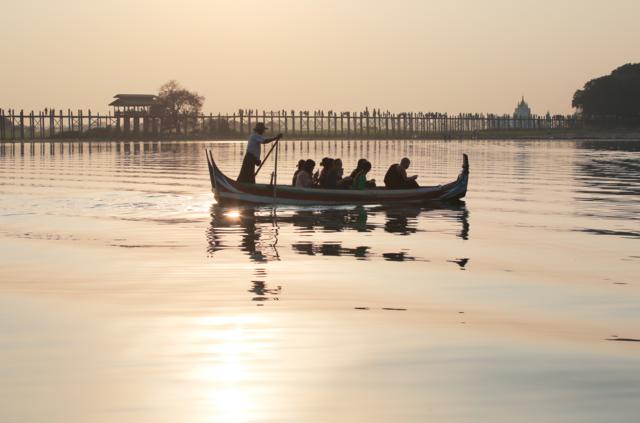
I sat watching the sun slowly drifting towards the horizon. Everything became quiet, only to see the sun round and red. The stream of people kept bustling across the bridge but I felt like I was frozen. I took some quiet photos that were a bit sad and lingering. I was able to see and feel the most beautiful sunset of my life like that…
>>> Read part 2: Discovering the land of fire, Bagan
More information:
+ Location: Mandalay is the second largest city in Myanmar, 700km north of Yangon. Mandalay is a bustling commercial center and a repository of ancient Myanmar culture. Considered a gallery of Myanmar art and architecture, Mandalay is famous for its stone carving, wood carving, silver, bronze casting, gold leaf work, tapestries, silk fabrics, and other traditional arts and crafts.
+ Travel:
- From Yangon to Mandalay there is now a high quality bus route, costing around 20,000 Kyat (420,000 VND) with good quality. There are also domestic flights and trains as well as regular buses.
- In Mandalay, there are cyclos, taxis, and some types of minibuses. Taxis in Mandalay (and Myanmar in general) are quite cheap compared to Vietnam. If you negotiate well, the price can be only about 350 Kyat/km, equivalent to 7,000 VND.
+ Famous attractions in Mandalay:
- Shwenandaw Monastery with extremely sophisticated sculptures
- Kuthodaw Paya - the temple with the world's largest Buddhist scriptures with 729 "pages" carved on marble
- Mandalay Hill with a walking journey to the top of the mountain to watch the sunset along the Ayeyarwady River
- Royal Palace
- Mahamuni Temple
- U Bein Bridge and Buddhist monastery in Amarapura
- Mingun Stupa
+ Accommodation: Hotels in Myanmar are generally more expensive than in Vietnam. About 35,000 Kyat (700,000 VND) for a budget hotel room.

 VI
VI EN
EN

































